We had decided to add in a little detour to Monkey Mia after chatting to one of the guys in our hostel. He had been there a few days earlier and really enjoyed the dolphin interaction session. When I say a 'little detour' it actually saw us driving over an hour in the wrong direction to get there as it's only got 1 way in and 1 way out and that 1 way is about 150km long, but we had a feeling it would be worth it! After 7 hours on the road, we pulled up at Monkey Mia Dolphin Resort where we had booked a dorm and were pleased to discover we had a 4 bed dorm to ourselves! The resort itself caters for all budgets from camping/dorm rooms right through to beachfront villas and the facilities are excellent: tennis courts, swimming pool, restaurant and bar. The best thing, though, is the fact that the beautiful beach is just seconds away so we enjoyed a walk along there. We were both exhausted and had another early start the next day, so after a quick look about and some dinner we headed to bed.
The alarms went off at 6:45am and, after putting it off as long as we could, we finally got ourselves out of our very comfy beds, got dressed and made our way down to the beach
. We were instantly rewarded for getting up so early as there was a beautiful sunrise coming up over the beach. A crowd had started to assemble on the boardwalk ahead of the 7:45am briefing. We were entertained while we waited by a very confident and inquisitive emu who tried to steal people's cameras and phones as they took photos of him! At 7:45am, one of the rangers explained how the session would work: at 8am we could all go and stand by the water's edge to wait for the dolphins to come in. Once one did, we could move deeper into the water and watch as the dolphin swam up and down in front of us looking to see if there was any fish about that she could catch. If there was she would put on an excellent show for us demonstrating their fishing skills and therefore wouldn't need feeding. If, however, she didn't find any of her own fish the rangers would choose volunteers to go in and feed them. We didn't have to wait long before Piccolo and her son Piper came swimming in. We could see a few other dolphins playing just out past the jetty but they didn't come in close
. Piccolo put on an excellent show for us, swimming up and down not far from our legs! Every now and then she would lean onto one side to look up at us properly or look right at us and smile! The ranger explained to us that actually their smile is a permanent fixture and is no indication of their mood! From time to time, Piccolo would swim out to sea to check on Piper who, by now, was off playing with the other dolphins! It was really lovely to watch! After quite a few laps, she hadn't found any fish of her own so we were all asked to move back out of the water and just those chosen were allowed to enter the water and feed them. As the feeding process started, two other dolphins came in for some breakfast: Piccolo's mum Puck and another female. Unfortunately, we didn't get selected to feed them but we had a brilliant view and had really enjoyed being so close to such beautiful creatures again.
Once we were showered and packed, it was time to get back on the road as we had another long day of driving ahead. We made a couple more stops before leaving Shark Bay: Shell Beach and Hamelin Pool
. Shell Beach, as its name suggests, is a 60km beach made entirely of tiny white cockle shells. From a distance it looks a bit like snow but up close you can see each individual shell and when you step on them you can hear the crunching sound! We've no idea how there are so many shells in this one area but it's very beautiful. At Hamelin Pool, there is a boardwalk which takes you over a large area of stromatolites. What are stromatolites I hear you ask?? Well, these are columns that are formed by Cyanobacteria and are the earliest life on earth. Apparently, they were part of the reason the earth got oxygen in its atmosphere as they are oxygen producers which is how they existed long before anything else. They tell scientists much about how life developed and evolved. To us they just look like normal black rocks but you can see the oxygen bubbles constantly coming to the surface from them and they can grow up to a centimetre a year.
Another dolphin encounter!
Thursday, July 04, 2013
 Monkey Mia, Western Australia, Australia
Monkey Mia, Western Australia, Australia
Other Entries
-
77Snowed in!
Jun 0331 days prior Lake Tekapo, New Zealandphoto_camera7videocam 0comment 0
Lake Tekapo, New Zealandphoto_camera7videocam 0comment 0 -
78Still no fish!!
Jun 0430 days prior Kaikoura, New Zealandphoto_camera3videocam 0comment 0
Kaikoura, New Zealandphoto_camera3videocam 0comment 0 -
79And not a Welly boot in sight!
Jun 0529 days prior Wellington, New Zealandphoto_camera32videocam 0comment 0
Wellington, New Zealandphoto_camera32videocam 0comment 0 -
80Mount Doom was doomed for us!
Jun 0826 days prior National Park Village, New Zealandphoto_camera4videocam 0comment 0
National Park Village, New Zealandphoto_camera4videocam 0comment 0 -
81The end of the road for our Stray bus!
Jun 1024 days prior Auckland, New Zealandphoto_camera0videocam 0comment 0
Auckland, New Zealandphoto_camera0videocam 0comment 0 -
82Eew, what's that smell?!?!
Jun 1123 days prior Rotorua, New Zealandphoto_camera17videocam 2comment 0
Rotorua, New Zealandphoto_camera17videocam 2comment 0 -
83An underground adventure!
Jun 1222 days prior Waitomo Caves, New Zealandphoto_camera17videocam 0comment 0
Waitomo Caves, New Zealandphoto_camera17videocam 0comment 0 -
84Kia Ora New Zealand!
Jun 1321 days prior Auckland, New Zealandphoto_camera1videocam 0comment 0
Auckland, New Zealandphoto_camera1videocam 0comment 0 -
85Well Aloha Hawaii!
Jun 1321 days prior Honolulu, United Statesphoto_camera66videocam 0comment 0
Honolulu, United Statesphoto_camera66videocam 0comment 0 -
86Trigger, Stanley and too many dolphins to name!
Jun 1717 days prior Kailua-Kona, United Statesphoto_camera30videocam 0comment 0
Kailua-Kona, United Statesphoto_camera30videocam 0comment 0 -
87A drive in volcano?!
Jun 2113 days prior Hilo, United Statesphoto_camera51videocam 2comment 0
Hilo, United Statesphoto_camera51videocam 2comment 0 -
88Sunbathing, shooting & sipping on cocktails!
Jun 2410 days prior Honolulu, United Statesphoto_camera34videocam 0comment 0
Honolulu, United Statesphoto_camera34videocam 0comment 0 -
89Stopover number 1!
Jun 277 days prior Auckland, New Zealandphoto_camera0videocam 0comment 0
Auckland, New Zealandphoto_camera0videocam 0comment 0 -
90Stopover number 2!
Jun 286 days prior Sydney, Australiaphoto_camera0videocam 0comment 0
Sydney, Australiaphoto_camera0videocam 0comment 0 -
91The big reunion in WA!
Jun 295 days prior Perth, Australiaphoto_camera1videocam 0comment 0
Perth, Australiaphoto_camera1videocam 0comment 0 -
92Our final Australian road trip!
Jul 013 days prior Carnarvon, Australiaphoto_camera1videocam 0comment 0
Carnarvon, Australiaphoto_camera1videocam 0comment 0 -
93Whalesharking at Ningaloo!
Jul 022 days prior Exmouth, Australiaphoto_camera37videocam 0comment 0
Exmouth, Australiaphoto_camera37videocam 0comment 0 -
94Another dolphin encounter!
Jul 04 Monkey Mia, Australiaphoto_camera12videocam 0comment 0
Monkey Mia, Australiaphoto_camera12videocam 0comment 0 -
95Naughty shaped rocks & sliding on sand!
Jul 051 day later Cervantes, Australiaphoto_camera27videocam 0comment 0
Cervantes, Australiaphoto_camera27videocam 0comment 0 -
96Laurs says farewell to the Land of Oz!
Jul 062 days later Fremantle, Australiaphoto_camera5videocam 0comment 0
Fremantle, Australiaphoto_camera5videocam 0comment 0 -
97Our first glimpse of Indonesia!
Jul 095 days later Denpasar, Indonesiaphoto_camera2videocam 0comment 0
Denpasar, Indonesiaphoto_camera2videocam 0comment 0 -
98Getting closer to Paradise!
Jul 095 days later Padangbai, Indonesiaphoto_camera3videocam 0comment 0
Padangbai, Indonesiaphoto_camera3videocam 0comment 0 -
99Where the streets have no name!
Jul 106 days later Gili Trawangan, Indonesiaphoto_camera49videocam 0comment 0
Gili Trawangan, Indonesiaphoto_camera49videocam 0comment 0 -
100Conquering Mount Rinjani!
Jul 2016 days later Lombok, Indonesiaphoto_camera72videocam 0comment 0
Lombok, Indonesiaphoto_camera72videocam 0comment 0 -
101Time to relax!
Jul 2319 days later Senggigi, Indonesiaphoto_camera7videocam 0comment 0
Senggigi, Indonesiaphoto_camera7videocam 0comment 0 -
102Surf's Up!
Aug 0229 days later Legian, Indonesiaphoto_camera5videocam 0comment 0
Legian, Indonesiaphoto_camera5videocam 0comment 0 -
103Laurs Vs Thavamanny, round 2!
Aug 0431 days later Kuala Lumpur, Malaysiaphoto_camera2videocam 0comment 0
Kuala Lumpur, Malaysiaphoto_camera2videocam 0comment 0 -
104Roll up, roll up!
Aug 1037 days later Battambang, Cambodiaphoto_camera74videocam 2comment 0
Battambang, Cambodiaphoto_camera74videocam 2comment 0 -
105Tuk-tuk Sir?
Aug 1340 days later Phnom Penh, Cambodiaphoto_camera43videocam 0comment 0
Phnom Penh, Cambodiaphoto_camera43videocam 0comment 0 -
106Life's a beach!
Aug 1744 days later Sihanoukville, Cambodiaphoto_camera26videocam 0comment 0
Sihanoukville, Cambodiaphoto_camera26videocam 0comment 0 -
107Farewell Cambodia!
Aug 2350 days later Phnom Penh, Cambodiaphoto_camera0videocam 0comment 0
Phnom Penh, Cambodiaphoto_camera0videocam 0comment 0 -
108This isn't 'Goodbye', just 'See you Soon'
Aug 2350 days later Kuala Lumpur, Malaysiaphoto_camera9videocam 0comment 0
Kuala Lumpur, Malaysiaphoto_camera9videocam 0comment 0 -
109Going it alone!
Aug 2451 days later Perth, Australiaphoto_camera6videocam 0comment 0
Perth, Australiaphoto_camera6videocam 0comment 0

 Monkey Mia, Western Australia, Australia
Monkey Mia, Western Australia, Australia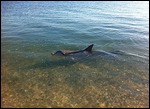
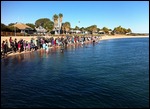








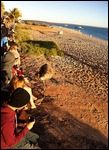

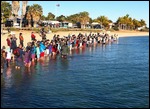
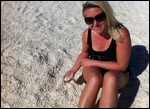
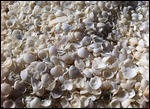
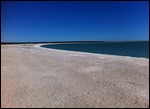
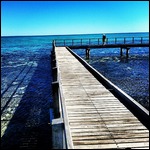
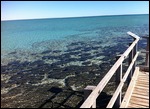
2025-05-23